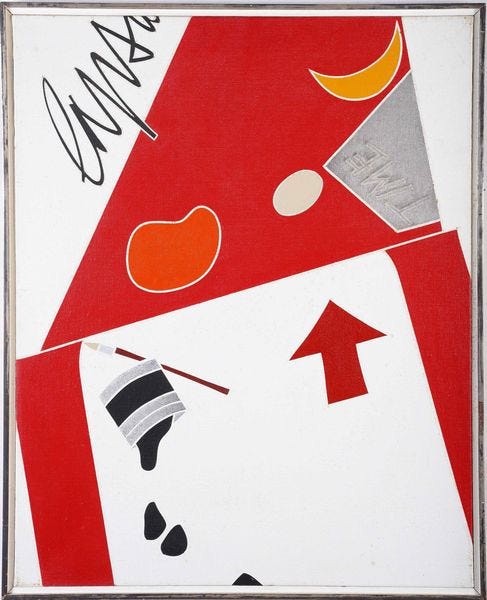Lapsus
NOUN [masculine]
Meaning and English translation 🔖
Slip
🇬🇧 Italians often use this Latin word to indicate involuntary errors while writing or speaking, such as substituting one sound or letter for another, merging two or more words into one, omitting a word, pronouncing or writing one name instead of another.
🇮🇹 Gli italiani usano spesso questa parola latina per indicare errori involontari nel parlare o nello scrivere, come sostituire un suono o una lettera con un altro, unire due o più parole in una sola, omettere una parola, pronunciare o scrivere un nome al posto di un altro.
You may encounter or read lapsus associated with other Latin words. In those cases, it’s where the error has been made.
- Lapsus calami → typo
- Lapsus linguae → slip of tongue
- Lapsus memoriae → slip of memory
| Masculine ♂️ | Feminine ♀️ | |
|---|---|---|
| Singular | il - un lapsus | - |
| Plural | i - dei lapsus | - |
Example sentences 💬
Che lapsus! Ho chiamato mamma l’insegnante…
What a slip of the tongue! I called the teacher mom...
Ho scritto “oranges” al posto di “origins” nella descrizione di questa newsletter, ma è stato solo un lapsus.
I wrote "oranges" instead of "origins" in the description of this newsletter, but it was just a typo.
This article is brought to you by Giulia School, where you can learn Italian the natural way—with real conversations and passionate teachers guiding you every step of the journey. It’s the closest thing to immersion you can get without living in Italy. Click here to learn more.
Idioms with lapsus 🇮🇹
Lapsus freudiano
→ Freudian slip
Quando ha chiamato il capo “papà”, il silenzio in ufficio è stato imbarazzante. Che lapsus freudiano!
When he called the boss “dad,” the silence in the office was awkward. What a Freudian slip!
Where does the word lapsus come from? 🔎
Lapsus comes from the Latin verb "labi," meaning "to slip" or "to fall."
Therefore, the past participle form "lapsus" directly translates to "slipped" or "fallen."
Did you know that... 🤓
Impress your italian friends with curious facts about Italy and its culture
Lapsus in Italian Literature: La Coscienza di Zeno

One of the most famous examples of a lapsus in literature is found in Italo Svevo's novel La Coscienza di Zeno (Zeno's Conscience). The protagonist, Zeno Cosini, often experiences situations where his subconscious desires manifest as lapsus or slips. This theme aligns closely with Freudian psychoanalysis, which Svevo was deeply interested in.
In the novel, Zeno recounts his life through a series of disorganized diary entries, which he writes at the suggestion of his psychoanalyst. One notable lapsus occurs when Zeno, intending to attend the funeral of his brother-in-law Guido Speier, mistakenly goes to the wrong funeral. This error is not merely a random mistake but reveals Zeno's underlying ambivalence and unresolved feelings toward Guido.
Zeno’s frequent lapsus highlight the tension between his conscious intentions and unconscious motivations, offering a rich examination of the psychological dimensions of human behavior. The novel's portrayal of these slips provides a window into Zeno’s inner conflicts and subconscious mind, making La Coscienza di Zeno a seminal work in exploring the complexities of the human psyche.
Italo Svevo's integration of Freudian ideas into his narrative technique was groundbreaking. La Coscienza di Zeno remains a profound exploration of human consciousness, portraying lapsus reflecting deeper, often hidden, aspects of personality and internal conflict. The novel's impact is such that it influenced the development of modernist literature in Italy, partly thanks to its innovative use of psychoanalytic concepts.
Lapsus in Italian Art: Emilio Tadini's Lapsus

Emilio Tadini's artwork "Lapsus" delves into themes of subconscious mistakes and the fluidity of memory and language. As an Italian painter and writer, Tadini drew inspiration from Surrealism and English Pop Art. His pieces frequently portray overlapping temporal planes, merging memory with reality and juxtaposing the tragic with the comic.
"Lapsus" reflects Tadini's extensive exploration of human psychology, focusing on how subconscious thoughts manifest as verbal or written slips. This theme closely aligns with Freudian theories about the unconscious mind. Tadini's art often features vivid, dreamlike imagery and intricate narratives, prompting viewers to introspect on their own cognitive processes.
Tadini's influence extends across multiple art movements, with exhibitions in major cities like Paris, London, and New York. His unique ability to blend literary and visual arts has secured his prominent position in the post-war Italian art scene, with significant exhibitions at prestigious venues such as the Venice Biennale and the Royal Palace in Milan.





